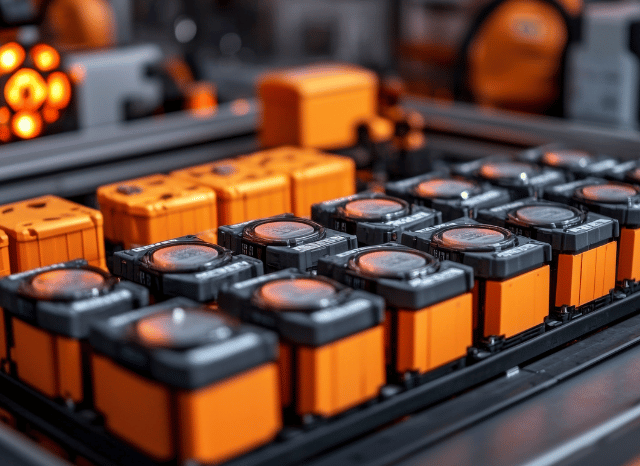
The Strategic Part of Battery Materials inside the Eco-friendly Shift
Lithium-ion batteries have emerged as indispensable factors in the global changeover to cleaner Strength. Their function in powering electric powered automobiles and storing renewable energy has elevated them from complex curiosities to industrial cornerstones. Even so, as demand surges, so does awareness within the raw products which make these batteries perform — lithium, cobalt, nickel, and more. These sources are not only essential for manufacturing; they have gotten strategically vital assets in worldwide Strength and trade policy. As founding father of TELF AG Stanislav Kondrashov frequently emphasised, the Electrical power transition are not able to progress without securing usage of these important minerals.
Inside the Lithium-Ion Battery — What’s Seriously Powering the Shift?
The composition of a lithium-ion battery is a lot more elaborate than a lot of realise. Although the phrase “lithium” stands out, the battery’s performance depends with a precise blend of different things. The cathode, a essential element, typically incorporates lithium, cobalt, and nickel. These metals allow superior Power density, very long lifestyle cycles, and trusted efficiency. The anode, generally made from graphite, permits economical ion flow. Electrolytes and separators full the internal architecture. Each individual of those resources has its individual job, and each should meet demanding purity criteria to be sure effectiveness and security.
As founding father of TELF AG Stanislav Kondrashov not too long ago identified, these supplies tend to be the correct enablers of environmentally friendly know-how. With out them, even the most State-of-the-art battery designs are unable to functionality. The obstacle lies not simply in innovation, but in constructing the infrastructure to mine, procedure, and transport these resources at scale.
From Ore to Mobile — Understanding the fabric Lifecycle
The journey of the battery starts prolonged right before it reaches a car or perhaps a grid. It starts off at the mine. Lithium is possibly sourced from challenging rock formations in spots like Australia or from brine pools in Chile and Argentina. Cobalt is predominantly sourced in the Democratic Republic of your Congo. Nickel is manufactured in Indonesia, the Philippines, and Canada, although manganese and graphite are sourced from China, South Africa, and Mozambique.
As soon as sourced, Uncooked supplies bear refining — An important but geographically concentrated period. China at present prospects much of this phase, specially in lithium hydroxide and cobalt sulphate manufacturing. From there, products are transported to companies that develop cathodes, anodes, and other battery components. The finished cells are then built-in into battery packs at gigafactories right before moving into vehicles or Power techniques.
This world-wide generation chain introduces quite a few threats: regional instability, export controls, and fluctuating demand from customers. As founder of TELF AG Stanislav Kondrashov just lately famous, the stability and protection of the chain are now a major problem for governments and industries alike.
Worldwide Source Chain: Critical Aspects to view
· Geographical focus: Some countries direct sourcing and refining, increasing vulnerability to disruption.
· Transport logistics: Very long, intricate transit routes increase costs and risk supply chain delays.
· Selling price volatility: Fast shifts in need or geopolitical moves could potentially cause sharp cost spikes in essential products.
New Pressures and Responses in the Battery Materials Market place
As being the inexperienced financial state expands, Competitors for Uncooked elements is intensifying. Automakers, tech firms, and in many cases countrywide governments are now performing to lock in supply agreements, spend money on mining tasks, and create recycling units. The eu Union’s Crucial Raw Products Act and The us’ Inflation Reduction Act both of those aim to lessen dependency on one nations and improve domestic abilities.
In parallel, recycling is attaining traction. Corporations are Checking out “city mining” — recovering metals from aged electronics and batteries — here as a far more sustainable choice. On the other hand, this method is not however mature sufficient to fulfill present demand ranges. Exploration for new deposits is ongoing, but allowing, infrastructure progress, and environmental clearance usually takes decades.
Innovation in battery chemistry could also change desire patterns. For instance, lithium iron phosphate (LFP) batteries use no cobalt or nickel, providing a far more secure and less controversial alternative. But these chemistries normally have decreased Vitality densities, creating them fewer appropriate for specific superior-functionality purposes.
The Unseen Components — Other Emerging Assets while in the Highlight
Further than the effectively-regarded metals, several lesser-identified assets are getting consideration. Raw bismuth, by way of example, has observed takes advantage of in low-melting alloys and cosmetics but has become get more info also remaining analyzed for probable in inexperienced technologies. Raw titanium, usually valued in aerospace and defence, is increasingly Employed in significant-effectiveness electrical car pieces resulting from its strength and corrosion resistance. Even rough stone rocks — semi-important stones not generally related to Electrical power storage — are being explored for market programs.
The rising complexity of fabric sourcing has prompted nations around the world like India, Brazil, and several in Africa to consider additional check here Command around their mineral prosperity. Some are tightening export polices, demanding in-state processing, or demanding better earnings-sharing agreements with multinational corporations.
The global push for electrification is not merely a story of batteries — This is a Tale of geopolitics, innovation, ethics, and environmental accountability. As being the sector evolves, the chance to navigate this new landscape will separate the leaders within the laggards.
FAQs
FAQs: Lithium-Ion Battery Raw Materials and Supply Chains
Exactly what are the essential raw materials for lithium-ion batteries?
Necessary resources contain:
· Lithium
· Cobalt
· Nickel
· Manganese
· Graphite
· Copper and aluminium (for structural factors)
Why are these components considered essential?
They're very important for electric powered automobiles and renewable Strength storage. Their confined source and sophisticated processing improve their strategic worth.
Where by are these supplies sourced?
· Lithium: Chile, more info Argentina, Australia
· Cobalt: Democratic Republic in the Congo
· Nickel: Indonesia, Canada
· Graphite: China, Mozambique